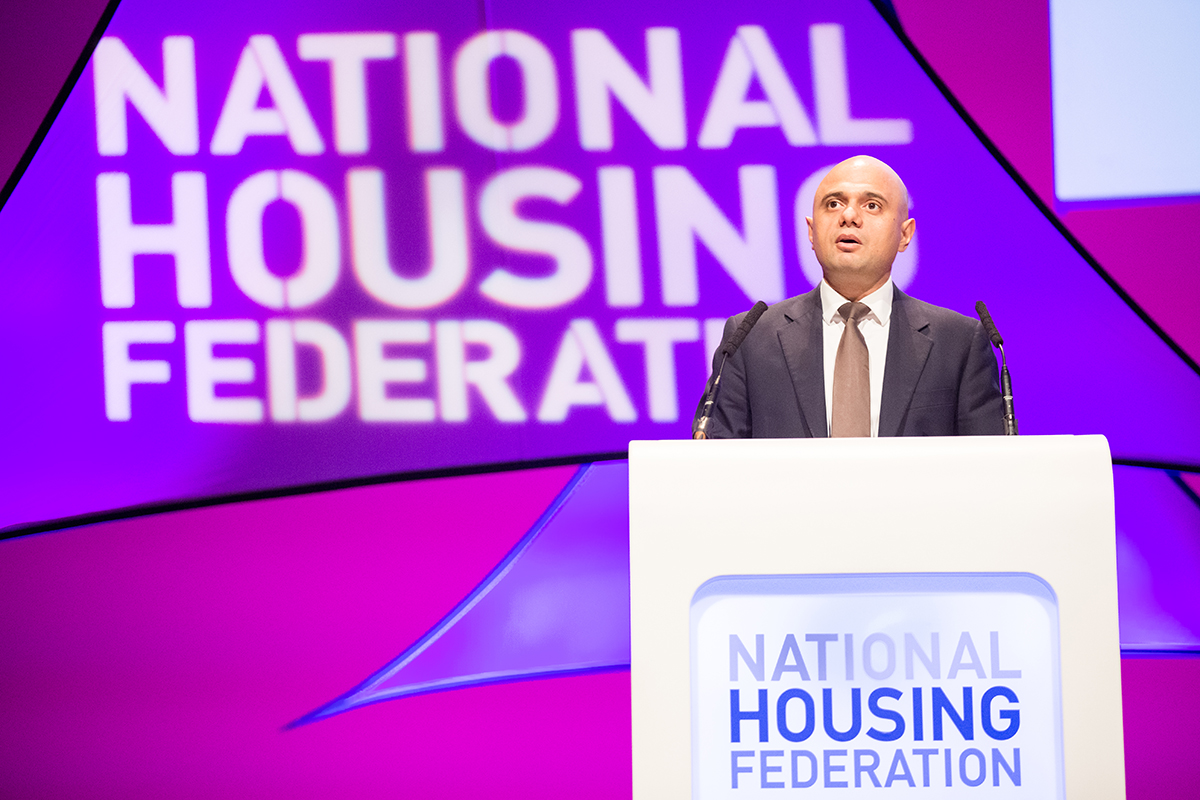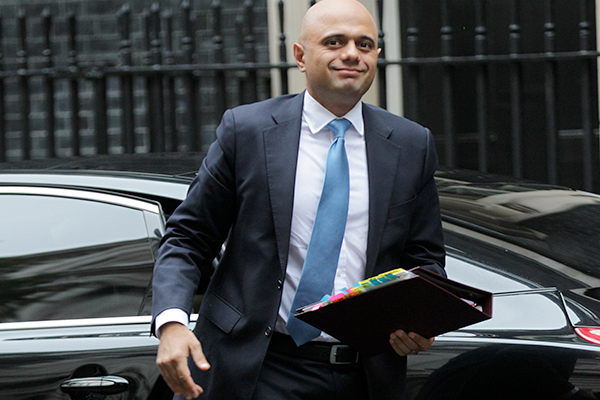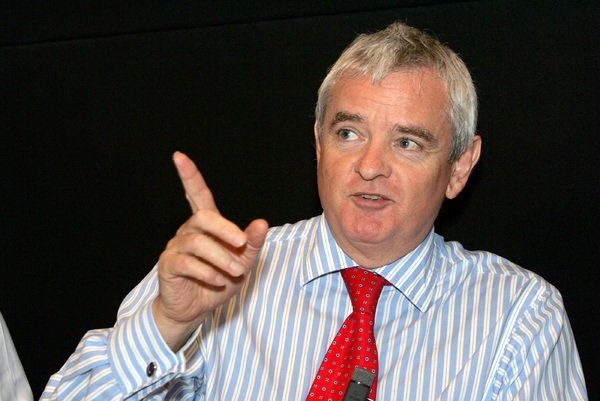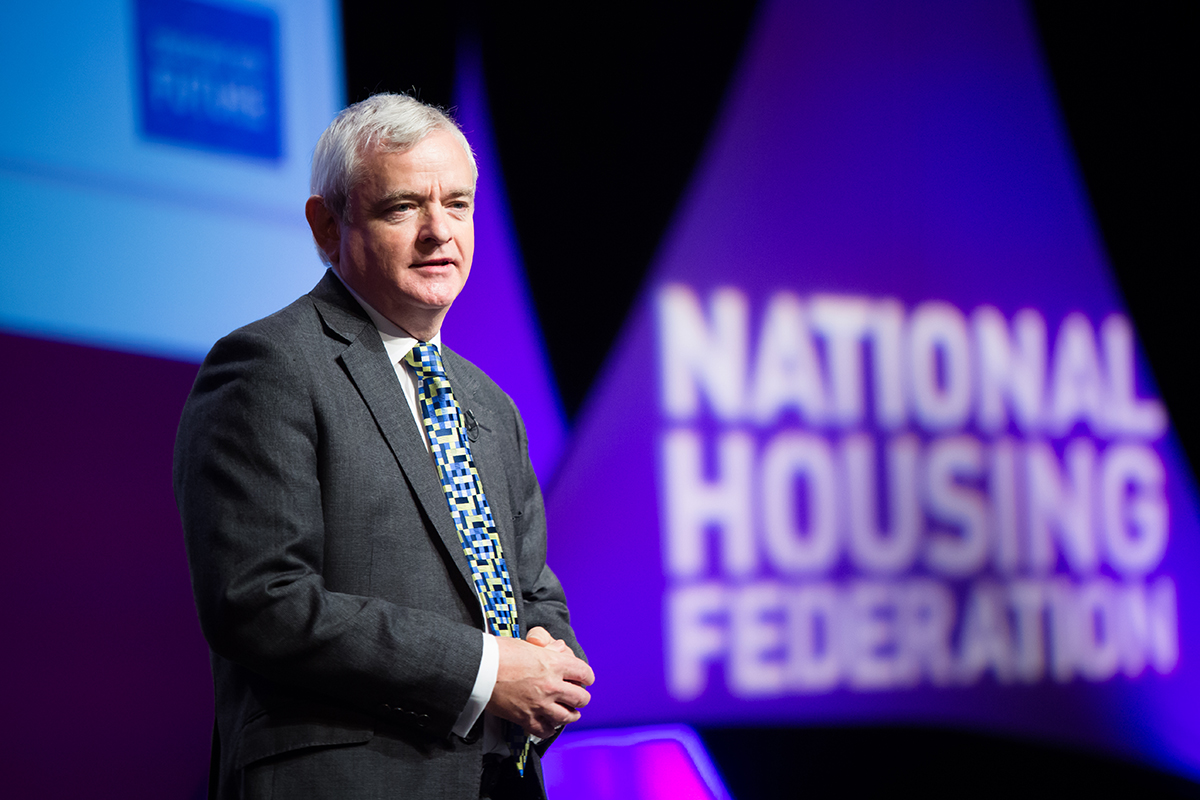You are viewing 1 of your 1 free articles
Dispatches from Birmingham
A round-up of the key talking points from the National Housing Federation’s annual conference in Birmingham. Pictures: NHF/Michelle Walsh Photography
1. What will the green paper hold?
So there was no announcement on rents, but Mr Javid did come with something to announce. The government will pull together a green paper on social housing which will be “the most substantial report of its kind for a generation”, in the words of the communities secretary.
Sector reaction was mixed. While David Montague, boss of L&Q was particularly effusive, describing it as “brilliant”, others were more muted.
The government spent six months at the end of last year kicking answers on housing policy down the road while it worked on its Housing White Paper, and this new document while being drawn up will provide the same shield from scrutiny.
Others read between the lines of Mr Javid’s words to decode a warning for the sector – he made several references to tenants’ complaints, including specific reference to failures to repair large cracks in walls.
There is a chance that a government in need of scapegoats may not be too friendly to the sector when the document is eventually published. But seeing housing, and social housing in particular, rise up the agenda was enough to merit a welcome from most delegates here.
2. Full circle on rents?
The anticipation in the hall was palpable as Sajid Javid turned to the topic of a rent deal. The communities secretary may later reflect that it could have been unwise to spend so long emphasising the importance of a deal before admitting he wasn’t going to announce one.
No politician likes unsolicited laughter, and the mix of giggles and heckles can’t have been a pleasant one. “When!?” shouted one angry member of the audience.
Rumours have been flying around the conference that Mr Javid’s hands were tied by the Treasury, but then that could be a convenient fiction for the secretary of state. Regardless, the sector has spent the rest of the conference arguing over his every word, and exclusive analysis of the speech by Inside Housing has proved revealing.
“The Ts are still being crossed and the Is are being dotted,” Mr Javid said, a clear indication that the announcement will involve ‘rent’ (which includes a T) and, crucially, ‘inflation’ (which begins with an I). Cryptic, secretary of state, but we cracked the code.
3. A change in rhetoric from David Orr
Two years ago, communities secretary Greg Clark stood on the stage in Birmingham with David Orr and unveiled a voluntary deal for housing associations to implement the Right to Buy. Since then, Mr Orr has been praised by many for his leadership in ensuring the sector is seen as one the government can do business with and delivering homes despite huge funding cuts and rent uncertainty.
This week, Mr Orr, for the first time in several years, put an explicit call for social rent funding at the centre of his conference speech. Critics will say Mr Orr should’ve been saying this for the past few years, however others argue that it was the very fact that the federation has shown itself to be a pragmatic and reliable partner for government that enables Mr Orr to call for social rent with real influence.
4. Alok Sharma addresses a major sector audience for the first time
The conference closed with a keynote session featuring housing minister Alok Sharma and Mr Orr.
It was a big moment for Mr Sharma – his first chance to directly address the sector since he was appointed three months ago, having backed out of the Chartered Institute of Housing’s annual conference in June.
He was teased by Mr Orr about the historical brevity of his role, and about Mr Javid’s repeated “very, very soon” promise on rents from the day before.
There was little in the way of gritty policy discussion, though Mr Sharma did say the Right to Buy for housing associations is a “good initiative” and that he wants to give the sector clarity on the subject.
But the minister appeared out to make a point about his commitment to make progress.
He said he was “determined” to get more homes built, and asked for “an opportunity” to deliver on the Housing White Paper.
And he added that he wants the Social Housing Green Paper announced yesterday to make tenants feel “like we have made a difference to their lives” and that “the whole attitude to social housing has changed for the better”.
5. Healey sets out his pitch
On the second day of the conference, shadow housing minister John Healey addressed an audience in a session entitled ‘Housing integration, devolution and regeneration’.
He echoed the tone from much of the conference – including Mr Javid’s – when he said “housing associations’ historic social mission is now more important than ever”.
To that end, he promised a Labour government would back the sector “100%” with “investment, certainty and political will”.
And he also pledged that if Labour was in Downing Street, it would offer “a new deal on housing between the people of this country and their government”.
More specifically, he said “new rules” are need to prevent a repeat of the Grenfell Tower fire, and that the current system to engage and empower tenants “does not work”.
With his party in power, Mr Healey said, that could mean “a new commitment so government and landlords must do more to make sure tenants are not marginalised” through giving them an institutional role at a national level and making it easier for them to make complaints. “I want to end the current system of reactive regulation,” he said.
6. Julian Ashby hints at the future of regulation
Julian Ashby, the chair of the Homes and Communities Agency Regulation Committee, was in a reflective mood ahead of the end of his tenure next March. Looking back on the 40 National Housing Federation conferences he’s attended over the years, Mr Ashby laid out the government’s tos and fros that have marked the regulatory landscape over the years for social housing.
He also gave hints at the future direction of the regulator as a standalone body that charges fees. There will be “bespoke engagement” with the “small number of very large players” in the sector and the regulator will make better use of the data housing providers make available and will employ people with the “right mix and level of skills”.
7. Big doesn’t appear to always be better
The idea of the Sector Scorecard was developed partly in an attempt to prove to the government the financial worth of housing associations and partly as a way of creating a comparison tool for the sector.
Now the first results are in from the pilot of more than 300 housing associations, representing 2.4 million homes.
The million dollar question “is big always better?” appears to have been smashed out of the water. The results showed that all housing providers had “mixed results” across the 15 efficiency metrics, regardless of size.
Mark Henderson said he expects housing associations to compare themselves with others using the scorecard. But Kevin Dodd, chief executive of Wakefield and District Housing, sounded a note of caution when he said the scorecard has a commercial angle that fits with government expectations but is also something the sector should sometimes resist.











